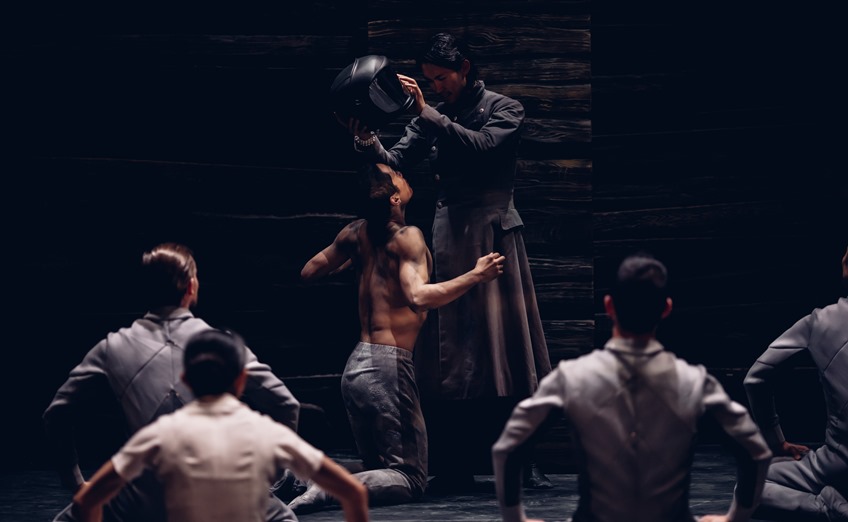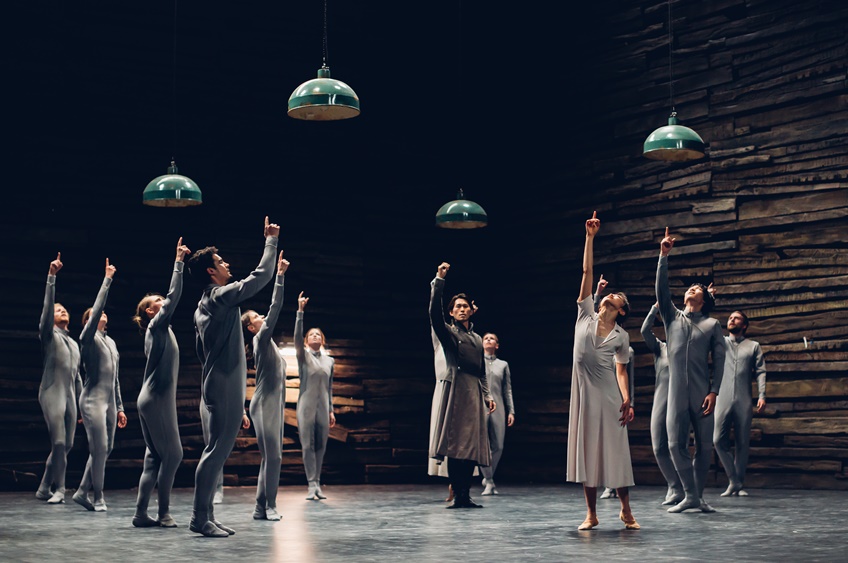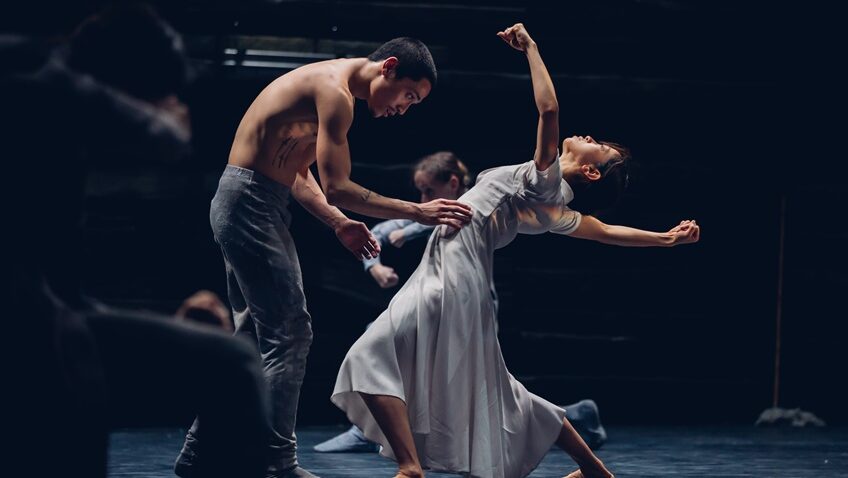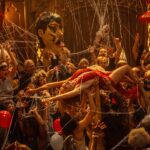Joyce Glasser reviews Creature (February 24, 2023) Cert 12A, 87 mins.
Asif Kapadia is not a particularly prolific director, but he is unpredictable. His debut feature, The majestic The Warrior starring the late, great Irrfan Khan, grew out of Indian folklore but was shot like a mix between Sergio Leone and Akira Kurosawa. Nine years later began a series of documentaries, all connected by the theme of tragic destiny. Now Kapadia turns to a new genre, with Creature, adapted from Akram Khan’s 2021 ballet but not a film of that production. Khan’s Creature was in turned inspired by George Büchner’s unfinished 1837 play Woyzeck which most music lovers know as the post WWI opera Wozzeck by Alban Berg.
Kapadia seems attracted to talented people who die tragically young. Senna was a biodoc about the Brazilian motor-racing champion who died in a crash age 34; Amy, about the singer/songwriter Amy Winehouse, who died age 27, and Diego Maradona – who made it to 60. And now Büchner. A medical doctor, novelist and playwright, he left Woyzeck unfinished when he died of typhus, aged 23. The life expectancy for the eponymous Creature in his newest film cannot be much higher.
The original 19th century story features a soldier named Franz Woyzeck, stationed in a provincial German Town. He lives with Marie and their child (the composition of the family and the mother’s name are hardly coincidental). However the union and the child cannot be blessed by the Church as the parents are not married.

Woyzeck supplements his meagre pay by serving as dogsbody to the Captain and a human guinea pig to a Doctor prophesising Dr Josef Mengele. In the Doctor’s first experiment, Woyzeck’s diet is restricted to peas. As a result, the breadwinner’s physical and mental health are affected, and he experiences apocalyptic visions. Exasperated, Marie shifts her attention to a drum major who humiliates and abuses the desperate and jealous Woyzeck, driving him to retaliation. Khan is not interested in courtroom scenes unfinished and in fragments at Büchner’s death.
Akram Khan’s Creature, a fusion of classical ballet and expressionistic modern dance, first appeared in 2021 in an English National Ballet Theatre Production and, coincidentally or not, is returning to Sadler’s Wells on March 23. Khan updated the play and opera by changing the setting from a German village to a decaying former Arctic research station. Kapadia retains that minimalistic prison like décor.
The choreography is set to a dynamic, emphatic, eclectic score by Vincenzo Lamagna. Emerging from a full orchestra, is militaristic marching, bombastic enough to keep you awake, with more flowing music for two beautiful, extended pas de deux, and computer-generated sounds to accompany the glitching we see on the screen as though from radio communication static. Symbolically, it might represent the inability of the Creature to communicate with his oppressors and even with Marie after she is worn down and subjected to the predatorial Major (Fabian Reimair); wearing a Prussian Blue uniform to tie in Büchner’s piece.
The film opens with a deafening static-filled recording of soon-to-be-disgraced President Richard Nixon’s telephone call to American heroes Neil Armstrong and Buzz Aldrin – the famous call to them when they landed on the moon. “Because of what you have done, the heavens have become part of man’s world.” This becomes a motif in Lamagna’s score and could be a warning about polluting and corrupting space with exports from our physically and morally damaged earth.
With one major exception, the characters are the same as those in the original story. Marie, beautifully acted and danced by English National Ballet’s Erina Takahashi, spends a lot of time mopping the floor and cleaning. The Belgium dancer and choreographer Stina Quagebeaur, who danced the role of Myrtha in Khan’s Giselle (also with the ENB), plays the straight-laced, pill dispensing Doctor. The aforementioned Major is the abusive, sadistic villain here as in the original story, and very much the foil to the Captain, danced by Ken Saruhashi. In the story, Woyzeck is the Captain’s groom, performing menial tasks for him to earn extra money. Here the Captain is transformed to a kind, caring member of the expedition.

The most striking change is that Woyzeck himself is no more – which is perhaps why the producers themselves use the image of Frankenstein in their descriptions. Instead of a soldier starved and rendered mad by a diet of peas, the eponymous Creature, very much the caged animal when the film begins, gradually morphs into a dehumanised man, like the carnival creature in Guillermo del Toro’s 2021 adaptation of Nightmare Alley.
The Creature is part of a new experimental programme that is testing the limits of human endurance in extreme climates. This is shown by several scenes where the scantily clad, frail Creature is thrown out of the station and then dragged in, half dead from the cold, with the sound effects making it colder. Although it’s freezing in the station, he wears almost no clothing which immediately suggests abusive treatment that you wouldn’t expect to be tolerated in 20th century research stations.
There would be no ballet without the miraculously agile Jeffrey Cirio’s unsettling, sinuous movements. It is as though his Creature is a contortionist so full of pain that he cannot control a body that condenses and expands to hide, or attempt in vain to express himself. We fear him and pity him as people fear and pity pathetic beggars on the streets without knowing how they came to be there.
Kapadia has managed to cut the length of the Khan’s piece almost in half, which is a good thing. But it is difficult to know whether the cuts contain some of the story explaining the set up and why the Creature and Marie are there to begin with. When there are no captions or dialogue we reply on gestures and actions. And some of the gestures are puzzling, such as the fingers pointing to the sky. From time to time rapid pieces of footage of the Apollo 11 take-off flicker on the screen. Is the Major persuading Marie to abandon the Creature and return to civilization with him?
Although the moon landing suggests we are in modern times, the costumes and the treatment of the Creature (would this be allowed in our heavily regulated day and age) suggest a blending of centuries as though we are watching through the James Webb Space Telescope. Or to put it simply, ‘Plus ça change….’




